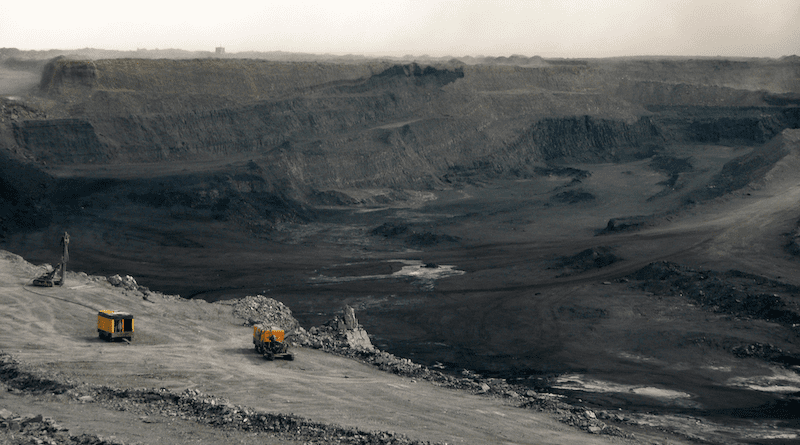South Korea Hopes For A Rock-Solid Critical Minerals Partnership With Mongolia – Analysis
By Anthony V Rinna
A mere 2000 kilometres from South Korea, mineral-rich Mongolia has the potential to be a solid partner in Seoul’s current efforts to diversify its mineral supply chains, particularly for rare earths. This is especially true as technologically cutting-edge South Korea has recently taken steps to provide official development assistance (ODA) to Mongolia to improve the latter’s extractive capabilities.
South Korea’s membership in the US-led Minerals Security Partnership means that Seoul’s involvement in resource extraction in Mongolia could potentially contribute to the efforts of democracies to diversify critical materials supply chains. But despite Seoul’s overt support for the liberal international order as a key foreign policy principle, its ability to leverage ties with Mongolia will depend on the extent to which it can separate its supply chain strategies from broader alignment with the United States.
South Korea, which is highly dependent on China for imports or rare earth metals, increasingly views this vulnerability in the critical resources field as a potential threat to national security. South Korean policy discourse occasionally cites China’s willingness to weaponise exports of rare earths. Beijing did just that during a diplomatic dispute with Japan in 2011, a move that prompted Tokyo to deepen its partnership with Mongolia.
In July 2023, South Korea’s Vice Foreign Minister Lee Do-hoon visited Ulaanbaatar for talks with the Mongolian government. While the two sides discussed broader economic opportunities, both governments emphasised collaboration in the field of critical mineral resources. In September 2023, the two sides inked an agreement whereby South Korea would provide ODA to Mongolia for the development of its extractive capabilities. Two months later, the two countries established the Korea–Mongolia Rare Metals Cooperation Committee.
Seoul appears to believe that providing ODA to Mongolia will encourage the export of goods derived from extracted materials to South Korea. In the years leading up to the 2023 bilateral agreement, the value of Mongolian exports to South Korea — which consisted overwhelminglyof mining sector goods such as coal — showed a significant increase when compared to trade figures from the earliest days of Seoul–Ulaanbaatar diplomatic ties.
South Korea’s high-tech industry’s reliance on rare earths, paired with Mongolia’s need for development assistance appear, on the surface, to be a winning combination.
ODA provisions from South Korea — one of Mongolia’s top donor partners — could therefore help sustain the current trend of high-volume natural resource imports from Mongolia to South Korea, while also enhancing external cash flow into Mongolia and helping to mitigate China’s dominance over Mongolia’s exports. But landlocked Mongolia is still at the mercy of its larger neighbours when it comes to exporting materials.
South Korea’s ODA provision to Mongolia for use in its natural resource industries is a relatively small portion of its overall development aid provisions to Ulaanbaatar, which has averaged US$53 million a year between 2018–2024.
Consequently, Seoul could emphasise that the relatively small amount of its ODA provisions directed at Mongolia’s mineral wealth are less for geopolitical purposes and more as part of a tailored development strategy toward Mongolia. Seoul could stress that its development involvement in Mongolia’s extractive industries is part of a wider bid to help Mongolia develop other aspects of its economy and society.
There are several other areas of complementarity between Mongolia and South Korea in terms of the latter’s development strategy and national interests.
Mongolia has the potential to expand its clout in the Information and Communication Technology field and digital services. An Information and Communication Technology powerhouse in its own right, South Korea is in a prime position to assist with Mongolia’s economic development on this front. In light of overcrowding in Ulaanbaatar, South Korea’s experience with smart city development amid overpopulation could also be an area of cooperation.
By tying development assistance in extractive processes with a comprehensive development strategy, South Korea could tailor its development strategy toward Mongolia with an eye on increased market entry into Mongolia. Further access to Mongolia’s natural wealth would of course benefit South Korea, but it could also allow Seoul room to argue that its intentions are not overtly geopolitical.
Of course, it is inconceivable that Chinese officials are unaware of Seoul’s designs to partner with Mongolia for the sake of diversifying critical minerals supply chains. But by tying cooperation with Mongolia in resource extraction in with its overall development aid strategy, Seoul could potentially shore up goodwill with Beijing. China would then be less inclined to use its own geopolitical levers to undermine the export of Mongolian natural resources to South Korea.
This may require Seoul to operate somewhat independently of its accession to agreements such as the Minerals Security Partnership. But any attempts to act as a ‘third neighbour’ to Mongolia depend on the good graces of those countries where adjacency with Mongolia is more than a mere abstraction.
- About the author: Anthony V Rinna is Senior Editor at the Sino-NK research group.
- Source: This article was published by East Asia Forum

